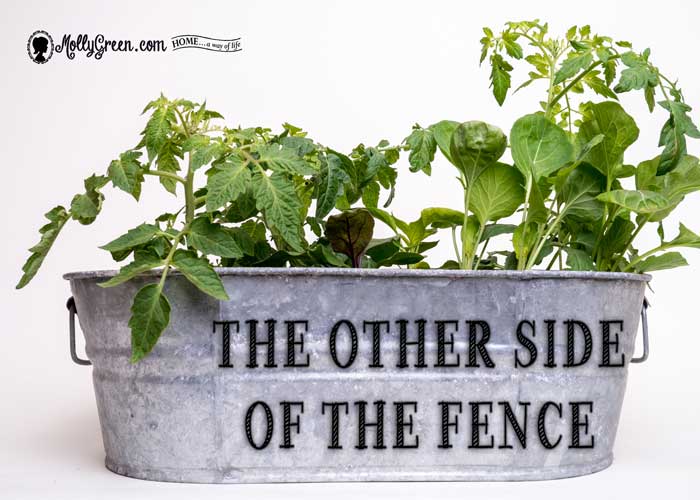
Why Not Try Urban Gardening?
I believe it safe to say that the majority of today’s health concerns come from our food choices. It is simple to drive to the grocery store, pack up a cart of food, and pop a purchase in the microwave. But the mindless task of nuking your food choice will cost you in the long run. Planting a small-scale garden for your family will generally cost you significantly less than a long-term prescription medication, and it will be much healthier! Plus, you won’t have to read the gruesome and detailed “Some side effects may include …” list that accompanies today’s prescription medications!
“If it came from a plant, eat it. If it was made in a plant, don’t.”—Michael Pollan
Apartment Urban Gardening Ideas
One of the biggest misconceptions potential gardeners face is that they must own multiple acres to grow a healthful garden. This is simply not the case! A small-scale garden can be easily planted, easily monitored, and you stand less chance of experiencing waste. Not to mention, if you have a small apartment indoor garden, it is highly unlikely that your beloved family cow will break in to the garden and consume all of your seventy-five strawberry plants for her breakfast. Not that I’m still begrudging her choice—but seriously—who needs to eat seventy-five strawberry plants?
If you are living in an apartment with no outdoor space, grab some containers and plant indoors! Basil, oregano, chives, parsley, rosemary, sage, tarragon, and thyme enjoy a south-facing window, while bay and chervil can be easily grown in an east- or west-facing window. You can find adorable painted pot projects with chalkboard labels on Pinterest. Get creative and have some fun!
Maybe you live in a subdivision with a strict set of no-grow rules. I’ve been there. I was the rebel who sneakily planted green beans growing up the trellis that my Japanese Wisteria was inhabiting. You can imagine my pride when my then five-year-old brought me the spring harvest of one ridiculously long green bean. It had reached a length of approximately three feet. There were no other beans on the plant. That night, we ate a salad with our peculiar one-bean harvest chopped and strewn across the top. Nonetheless, I had outsmarted the garden police. And I was proud.
We currently own multiple acres in west Georgia, but we still choose to plant our gardens in raised beds. We have a small orchard with apple trees, peach trees, grape, blueberry, raspberry and blackberry vines, and a fig tree or two. Beside the orchard, our bees reside. Bee ownership was one of the best decisions we have made for my bread baking endeavor, curing our allergy issues and allowing our garden to thrive!
We have certainly come a long way in our handling of the bees, as well. In the beginning, we suited up and smoked the poor things so intensely, neighbors a block down would have been convinced our house was burning to the ground. These days, we can carefully check on them in shorts and a t-shirt. Their aggressiveness depends upon their particular variety and disposition.
The plants we raised in our beds this winter have consisted of cabbage, Brussels sprouts, lettuces, spinach, onions, and herbs. My compost of choice is a dark black mushroom compost. I obtained it from a local landscaping company. It is organic and very nutrient-dense! Our lettuces and cabbages are as large as those grown for grocers, but ours are totally natural.
Our raised beds are made of 2″x12″x12″ untreated pine. There is a risk that we will need to replace rotten boards over time. But pine is a very strong wood, and I did not want to take the chance of feeding my family the chemicals that can leach from pressure treated wood.
Urban Gardening for Relaxation and Stress Relief
I have found gardening to be not only relaxing, healthful, and stress relieving, but also a beautiful combination of art and science. Plants placed in strategic locations or planted in a particular succession can serve to heal the pH in recovering soil. Others can rid your garden (or home) of pests. For example, bay leaves keep cockroaches at bay (catch that pun?), lemon balm repels mosquitoes, mint is unattractive to ants and mice, flies avoid basil, geraniums get rid of Japanese beetles, catnip not only makes your cat loopy, but also drives away a large variety of bugs, and mums are perhaps the most powerful of all, as they repel roaches, fleas, ticks, bed bugs, lice, silverfish and ants!
If your garden has been overworked, it might be time to rotate some different crops through the area and allow the soil to heal! These are known as “green manure” crops, and are grown to be turned back into the land, instead of being harvested. They will not only fertilize your garden, but they will strengthen your plants’ resistance to bugs! The top five green manure crops are fava beans, alfalfa, red clover, lupin and winter tare.
I have found farming, and particularly homesteading, to be a mentality. Whether you reside in a New York flat or on a 100-acre farm, there are plenty of options available to grow your own foods. Many have successfully taken on the potatoes in a barrel project, the tomatoes in a hanging basket endeavor, or the “garden lawn” mentality. I encourage you to research, experiment, and eat as close to home as you can. And if you ever need motivation to eat naturally, Google “strangest medication side effects.” It will work every time.





